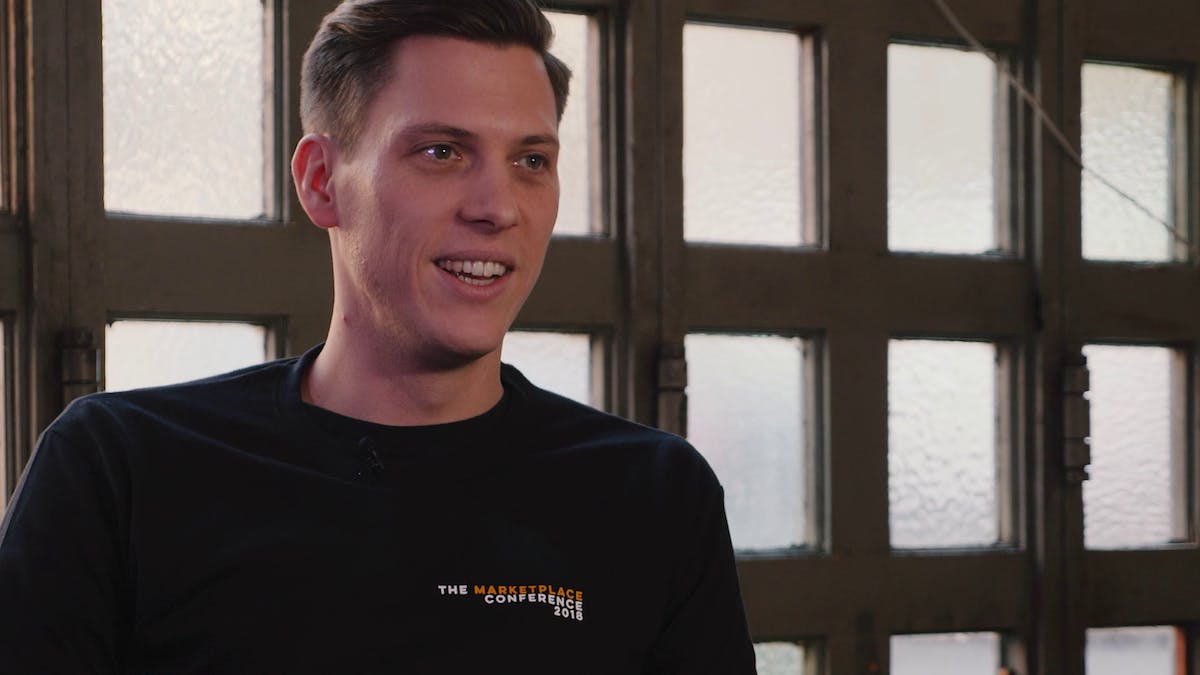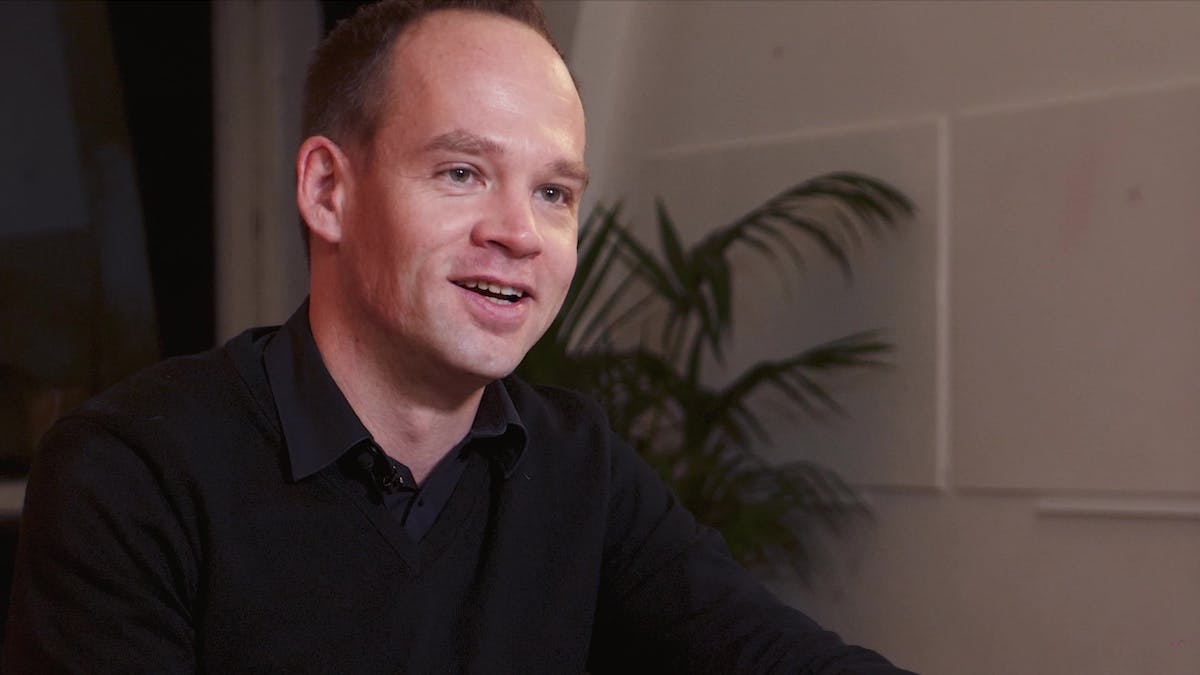What do investors look for in marketplaces?
Mathias Ockenfels shares his love of network effects – and how he spots them early on.
Published on
Last updated on

The Backstage brings you a series of interviews with leading marketplace experts. Here's episode 1 with Speedinvest's Mathias Ockenfels.
What kinds of marketplaces get investors excited? In this episode of The Backstage, Mathias Ockenfels shares his love of network effects and reveals how investors spot them early on. He also explains why investors are drawn to business-to-business (B2B) marketplaces.
Marketplaces are great businesses because they create transparency, efficiency, and trust.
Mathias Ockenfels, Partner at Speedinvest, runs the company’s early-stage focus fund investing in network effects. He is fascinated by the business power of marketplace platforms, but also their ability to make the world a little bit better.
We sat down with Ockenfels to understand what types of marketplaces stand out to investors, how to spot early signs of success, and where the untapped marketplace opportunities are.
Pressed for time? Here are our three main takeaways.
- If your marketplace isn’t solving a real problem, it doesn't have a reason to exist. To succeed as a marketplace, you need to make the world a better place for all participants. That means increasing the transparency of a given market, raising the efficiency of buying, selling, or renting something, and building more trust between the transacting parties.
- How many active monthly, weekly, or daily users do you have? How often do they log in? How are they using your platform? In the early stages of a marketplace, investors like Ockenfels are not as interested in marketplace metrics such as your financial KPIs as they are in seeing if your Minimum Viable Platform has initial traction that proves your product-market fit.
- Investors like B2B platforms. In consumer-focused marketplaces, many categories already have competition. This means that business-to-consumer (B2C) newcomers need to combat existing network effects with an innovative marketplace product that is exponentially better than previous ones. In the realm of B2B, many categories still have no dominant marketplace players. That leaves plenty of opportunities for emerging platform businesses to be the first mover.
More of a reader? You can find a full transcript of our interview with Mathias Ockenfels below. The transcript is lightly edited for an enjoyable reading experience.
I'm Mathias. I run Speedinvest X. X stands for network effects. It's the focus fund from Speedinvest, focusing on marketplaces and platforms, investing in early-stage companies in Europe and the U.S.
I've been basically doing this for the last 10 years in different roles. I started my career in a VC fund, where I also started investing and focusing on marketplaces. One of my first investments was a company called Lieferando that then was acquired by Takeaway, a big food delivery marketplace.
After that, I switched to the other side of the table and worked for a subsidiary of Naspers. Naspers is a big multinational media company that also invests in a lot of marketplace businesses. I did M&A [mergers and acquisitions] for them: buying and selling parts of the business, which were all focused on online marketplaces, online platforms—any kind of business doing network effects.
After Naspers, I joined Point Nine Capital in Berlin to build their marketplace practice and focus on marketplaces within the team. I did that until about a year ago, when I had the opportunity to launch this new fund together with Speedinvest. Since then, we've been building the team at Speedinvest X. It's a little bit like a startup itself, and it feels like a startup. Also, as a part of that, we’re hosting and organizing The Marketplace Conference.
In the beginning, in my very first job, I saw how powerful a marketplace can be. And, when network effects kick in and they unfold, how powerful that is from a business point of view. But what I also liked about it, from a more theoretical point of view, is how a marketplace creates transparency, creates trust, and basically makes everything more efficient.
I think those three pillars—the transparency, the efficiency, and the trust—is also something that I always continue to look at until today and that is important to me beyond the whole financial side of things. So the powerful dynamics of a marketplace business model, but also, to a degree, their ability to create a better society, in certain ways.
Coming back to those three pillars: trust, transparency, and efficiency. I think you have to think about how your product, your marketplace, is making the world a little bit better for all the participants on all those three dimensions. I think if you're not really solving a problem for the participants, then you don't have a reason to exist, so to say, as a marketplace.
But that’s pretty soft, right? It’s not that tangible when I say it like this. So, focusing more on the kind of hard facts, what is important is to focus on engagement in the very, very first place. That's what we look for in the very early days.
Because we are a pre-seed and seed investor, we obviously look at marketplaces that do not yet have network effects. It's very hard to spot them, to identify them at the time when we look at it. So, what we have to see is if there’s potential to develop network effects.
If yes, then we look at what kind of problem the marketplace is solving around, for example, those three pillars that I mentioned. We validate that by looking at how users are using the marketplace. From the use case that this marketplace is built for and the kind of usage that I would expect based on it, is the marketplace fulfilling that?
For example, a marketplace for housing. You don’t buy a house every month, right? As the end consumer, you probably only do it once every couple of years. The frequency of usage on such a marketplace is different than on a marketplace for food delivery, for example. There, you order food every week or every other day.
So, based on that kind of usage pattern that I would expect, I look at the engagement on the marketplace.
I say engagement because that's less financial. It's not revenue or transaction volume and so on. It's more like: how often do people log in? How do they use it? How many active weekly, monthly, daily users? And so on. From that, we try to derive whether or not there is product-market fit, or whether there's an indication for early product-market fit.
Then, based on that, if a company has a sort of MVP built, and can show that there's some initial traction on those non-financial KPIs, that gets us excited. This is where we say, "Okay, I want to dig deeper. I want to learn more. I think that there's something that gets us excited."
Quite a few investments in the B2B space, actually. I would say it's probably 50–50 between more consumer-focused and more B2B-focused marketplaces. We've also done some first ventures into the AR/VR space that I'm personally very excited about.
We recently invested in Admix from London, for example, which is, you could argue, a bit of an ad tech business. But it very much has marketplace dynamics because it connects buyers and sellers of the advertising space but in an AR/VR environment. So it is part of our thesis because you have super-strong network effects in this type of business.
Another interesting one is a company called Packhelp from Poland. It's actually in the B2B space. It does customized packaging for e-commerce shops or any kind of retailer. So on one end, you have lots of manufacturers of customized packaging, of printing facilities and so on. And on the other side, you have small and medium-sized e-commerce sellers that want to deliver their goods in their own customized branded packages.
The platform basically connects them, aggregates the volume, and by doing so, allows to actually efficiently produce also smaller batches of customized parcels and still be able to take a margin out. This is exactly what I mean when I say efficiency, for example, or trust and so on, and they actually make it possible.
This is a market that, today, is not even there because big printing facilities and providers don't take on these small orders. It's not economically viable for them. But Packhelp makes it possible to actually produce it in an economically viable and efficient way. Therefore, they can generate business with that. This is where technology enables a marketplace because they've built their own customization software and their own plotting software for the printers.
Yeah, I think there are a lot of opportunities still in B2B because it's more of a blue ocean in comparison to a B2C, for example.
I think in B2C, a lot of categories have been covered already with "Marketplace 1.0" approaches. So, if you want to build the next marketplace there, you have to really innovate on product. You have to build a solution that is ten or a hundred times better than what is there already and try to break through the existing network effects.
Whereas in B2B, there are just a lot of categories where there’s no marketplace right now. There's nothing, or at best you maybe have a classifieds or listings site. But there's no dominant player in a lot of verticals. So you can still come into a kind of green field and just start from scratch and be a first mover.
That's why also I think we like the B2B space a lot. There's an advantage, it’s possible for a marketplace to be the first one and to build up network effects over time. They can solve the chicken and egg problem without having to battle with someone else.
This is the first episode in The Backstage interview series. 12 more episodes are in store, featuring marketplace industry heavyweights like Doreen Huber, Josh Breinlinger, and Ben Narasin. You can subscribe to the series by signing up for the Marketplace Academy newsletter.
You might also like...

Makerist founder Axel Heinz on how to validate a marketplace idea
Axel Heinz’s story proves that you can prevalidate your marketplace idea extremely affordably. And that you should.

Why you should launch your marketplace early
‘Time is money’, and other teachings to inspire you to take the plunge and launch your marketplace as soon as you can.

Three lessons learned: What matters most in marketplaces
In this interview, Oliver Bremer discusses how and why his first marketplace business Tangareef failed and what he learned from it to start a new project.
Start your 14-day free trial
Create a marketplace today!
- Launch quickly, without coding
- Extend infinitely
- Scale to any size
No credit card required
